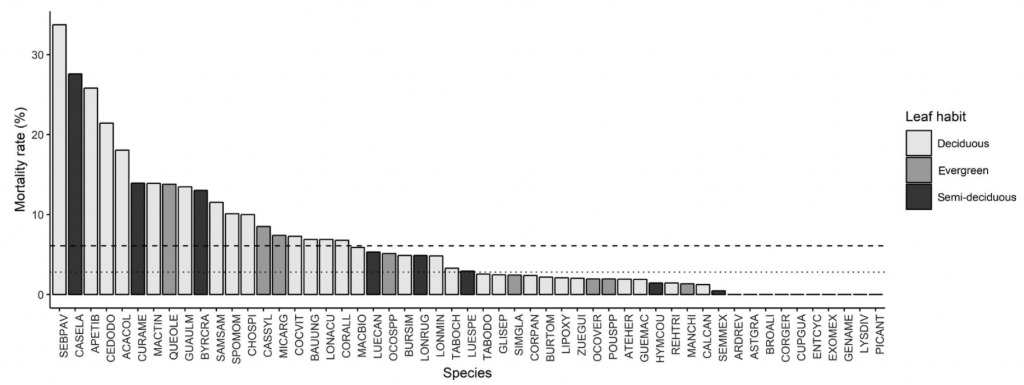A catastrophic tropical drought kills hydraulically vulnerable tree species
Drought-related tree mortality is now a widespread phenomenon predicted to increase in magnitude with climate change. However, the patterns of which species and trees are most vulnerable to drought, and the underlying mechanisms have remained elusive, in part due to the lack of relevant data and difficulty of predicting the location of catastrophic drought years in advance. We used long-term demographic records and extensive databases of functional traits and distribution patterns to understand the responses of 20–53 species to an extreme drought in a seasonally dry tropical forest in Costa Rica, which occurred during the 2015 El Niño Southern Oscillation event. Overall, species-specific mortality rates during the drought ranged from 0% to 34%, and varied little as a function of tree size. By contrast, hydraulic safety margins correlated well with probability of mortality among species, while morphological or leaf economics spectrum traits did not. This firmly suggests hydraulic traits as targets for future research.

Species-specific mortality rates during an extreme drought for 53 species in seasonally dry tropical forest in northwestern Costa Rica using the combined dataset of trees sampled in 2015 only. The dotted line represents average plot-level mortality rates from 2009–2014 in 18 long-term forest plots (trees >10 cm diameter at breast height) and the dashed line indicates the average plot-level mortality rate during the 2015 El Niño Southern Oscillation derived from the same plots. Refer to Data Table S1 for species codes. Species are color-coded by leaf phenology (i.e., evergreen, deciduous, or semideciduous)
Full paper can be found here
